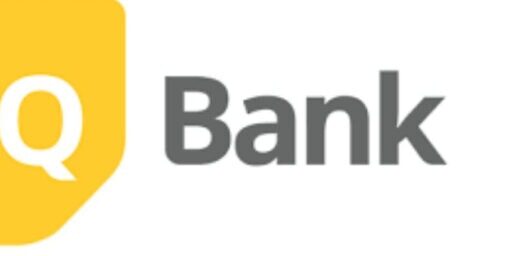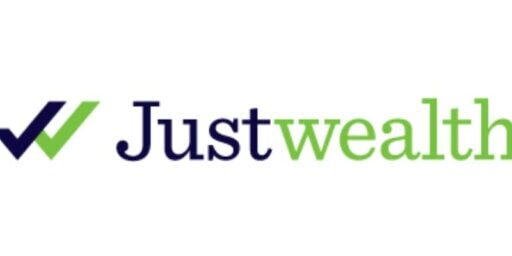Smith Manoeuvre Portfolio – Feb 2009
For those of you just joining us, this is my portfolio that is leveraged with money borrowed from my home equity line of credit (HELOC). As the money borrowed is used to invest, the interest charged is tax deductible. For more details, check out my modified smith manoeuvre strategy.
It’s been a couple of months since the last update and there isn’t much good news to report back. The portfolio has been driven down lower as the markets are still making new lows. Even though there are a good few equities that may be considered “cheap”, I’m nervous about deploying new capital in this market as the bears have clear control.
Despite this though, I did dabble a bit. So what did I buy? Only one purchase, 30 shares of Scotia Bank (BNS). Seems though that lately whenever I buy something, it goes down further!
If you compare to last month, you may notice that the portfolio dividend yield has been reduced a bit. The reason is that Husky Energy has decided to reduce their dividend during this period of reduced oil prices. There is some speculation that the banks may potentially reduce their dividend as well which would put a damper on my dividend goals. I’m going to keep my fingers crossed that the banks pull through this financial mess without touching their dividend payout.
Here is my SM portfolio as of Feb 2009:
| Stock | Symbol | Shares | Avg Buy Price | Total | Div/Share | Yield |
| Royal Bank | RY.T | 75 | $47.62 | $3,571.25 | $2 | 4.20% |
| CIBC | CM.T | 45 | $67.14 | $3,021.25 | $3.48 | 5.18% |
| Power Financial | PWF.T | 105 | $35.14 | $3,689.65 | $1.40 | 3.98% |
| Scotia Bank | BNS.T | 105 | $41.91 | $4,400.52 | $1.96 | 4.68% |
| Manulife Financial | MFC.T | 125 | $33.12 | $4,139.48 | $1.04 | 3.14% |
| Fortis Properties | FTS.T | 100 | $26.69 | $2,669.49 | $1.04 | 3.90% |
| TransCanada Corp | TRP.T | 50 | $36.87 | $1,843.25 | $1.52 | 4.12% |
| FTSE RAFI US 1500 Small-Mid ETF | PRFZ.US | 20 | $51.50 | $1,029.99 | $0.42 | 0.82% |
| AGF Management Limited | AGF.B.T | 50 | $22.71 | $1,135.49 | $1.00 | 4.40% |
| Bank of Montreal | BMO.T | 25 | $44.17 | $1,104.24 | $2.80 | 6.34% |
| Husky Energy | HSE.T | 85 | $35.90 | $3,051.28 | $1.20 | 3.34% |
| Petro Canada | PCA.T | 50 | $30.57 | $1,528.49 | $0.79 | 2.58% |
| Teck Cominco | TCK.B.T | 100 | $15.35 | $1,258.99 | $0.00 | 0.00% |
| TD Bank | TD.T | 50 | $48.29 | $2,412.23 | $2.44 | 5.06% |
Total Portfolio Book Value: $50,000 (total invested from HELOC)
Portfolio Net Value: $37,345.54
Total Portfolio Cost Base of Equities (including commissions): $34,855.60
Portfolio Market Value of Equities (as of Feb 24, 2009): $20,672.10
Total Dividends / Year: $1,361.30
Portfolio Dividend Yield: 3.91%
It’s a little demotivating to see the net value of my portfolio well below the book/purchase value. However, if we were to focus on the positive, it would be that the dividend yield is still relatively high relative to my after tax investment loan servicing costs. In addition, I still have substantial credit available on my HELOC which is potential investment cash.
There have been a lot of readers who have mentioned that they are interested in a leveraged portfolio. Over the long term it may be lucrative. However, over the short term, equities are volatile and can put the portfolio deep in the red. My portfolio is a prime example of what can happen. If you can’t stomach losing 20-30% in the portfolio in any given year, then your risk tolerance isn’t suited for leveraged investing.









Hey,
I am regular reader of your site. Good job!
I was looking over the investments in your SM portfolio and I would like to know which investments you would buy now if you were to invest in the market. It does not have to be an investment from your SM. I am looking to start my own portfolio and would like to get some ideas. I have had an investment loan with an advisor here in town for the last 14 months and I am down around 45%. I am realizing I am the best person to invest my money, not an advisor investing in mutual funds with high MER’s. I have a sum of money to invest and I am thinking about individual stocks using etrade with some ETF’s in the mix. Also, is anyone interested in starting a investment group that could meet regularly in the St.John’s area to discuss investment opportunities? Nothing formal, just a general brain stoming session over a game a pool or beer, etc…
Thanks and regards,
Glen
Great post. Added to RSS feed and soon to the blog roll!
Mark, I do like ENB and it’s on my watch list. It seems to have held up very well during this market crash. I am however, waiting for it to get cheaper before I open a position. With regards to DRIP, I do with my other accounts, but not my SM. I like having the cash on hand to either pay down the mortgage, or reinvest in stock that I find cheap at the time.
Hey Q,
Good for you re: completely MER free!
I’m hoping to get there in another year, once the markets come back some and I can sell or transfer some of the higher MER equity funds to bond index funds, for stable growth.
After that, it’s all direct and DRIP investing with CDN dividend-paying stocks.
I totally agree – financial advisors are good for starters, but nobody will ever be more concerned about your money than you. Like everything in life, you need to educate yourself and apply your knowledge to be successful.
Mark
Hey FT,
I’m curious…do you follow DRIP investing?
If so, why don’t you include ENB in your stock list?
It seems like a no-brainer?
If you don’t DRIP, why not?
Curious to hear your response.
Continue the good work on the Blog.
Cheers,
Mark in Nepean
Looking forward to your update on PRFZ.US… I was also thinking RRSP or TFSA for this as it’s not a canadian dividend and the previously mentioned lower yield that wouldn’t cover the interest rate.
Highlander, thanks for the insightful comment. I actually have a post on this topic coming up next week with very similar ideas.
I’ve been thinking about exit strategies ever since I started my SM a couple of years ago. The SM for us was a way to finance a cottage without completely destroying our existing retirement plan and investments. I don’t want to enter retirement in 10 years (one can hope :-) with a large amount of debt, even if it is backed by securities and the real estate.
So I want an exit strategy. This current market is a good example of why. With the portfolio well under water, or if interest payments went way up, or tax rules on investment expenses changed dramatically, it could become a very uncomfortable situation. So with a retirement date on the horizon, my thought process goes something like this:
Once the entire mortgage is gone, the cash flow from principle payments either gets reinvested or pays off the LOC. Im thinking at the moment that if the portfolio is underwater, I invest the cash flow in new investments. If the portolfio is above water, then I pay off the LOC.
My logic is that any stocks in the portfolio that are underwater are cheaper to buy on the market than they are to “buy” them from my LOC by paying it down.
Ie, Assume I only have 1 stock in the portfolio, and I originally bought 1000 shares for $100 each. The portfolio is now underwater and worth $75,000 instead of $100,000. Every $100 I pay down on the LOC “buys” me one share back. ie, it will take $100,000 to remove the debt from all 1000 shares, and I’m left with $75,000 in investments. when the stock returns to $100, I’ll have just my original $100K.
I’d be better off buying more shares at $75 from the market and holding them until the recovery to $100 happens, then paying down the LOC. $100,000 will buy 1333 shares at $75. when the stock hits $100 again, I can pay off the LOC and now have $133K in investments instead.
The other case is If the portfolio is above water. In this case I’m buying the stocks held in the LOC at a discount to the market price when I pay it down. If the market price is $125 a share, every $100 I pay on the debt buys me 1 share. if I put $100,000 down, I have a $125,000 portfolio.
Will I take the debt down to zero? maybe not… I see some potential value in keeping some interest expense in order to do a form of RRSP melting into TFSA accounts during the early years of retirement, but those are details I haven’t completely worked out yet.
It reduces the long term leveraging effect somewhat, but the SM wasn’t a pure retirement vehicle for us anyway, just a financing tool to offset the loss of capital until we sell the cottage someday. Until then, I also like having the option of then being able to redraw on the LOC should a good buying opportunity come along… and then start the whole process over again :-)
Thanks for the update. I’m in a similar position with $50,000 leveraged and a worth around $36,000. I’ve been very tempted to throw another $10,000 into it but only after I max out RRSP, RESP, and start up a TFSA. Thanks again for sharing…
>In hindsight though, I would prefer that ETF within my RRSP. More on this later.
I smell a Non-withholding tax article in the works…
For those of you doing the SM (whether 100% leveraged or not), do you guys have an ‘exit’ strategy. As you note FT, if hyper-inflation does become are reality would any of you consider dropping the strategy?
At some point (% interest differential over your return) the strategy might stop working.